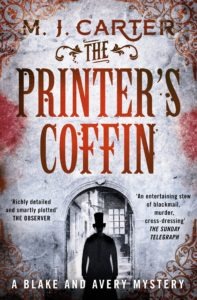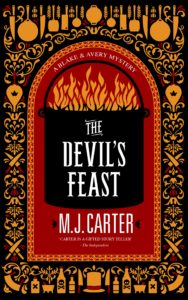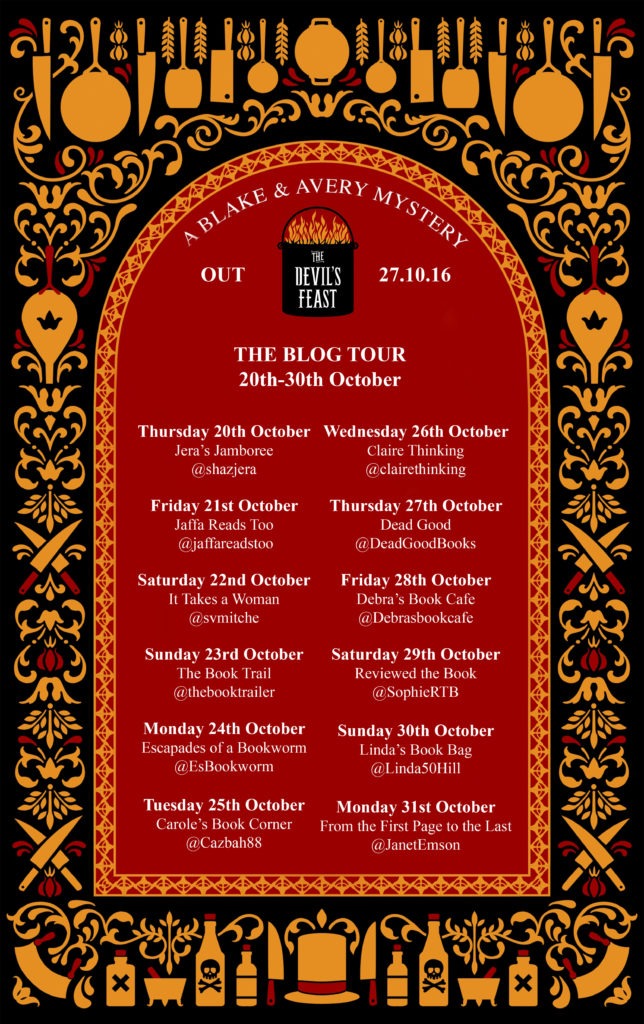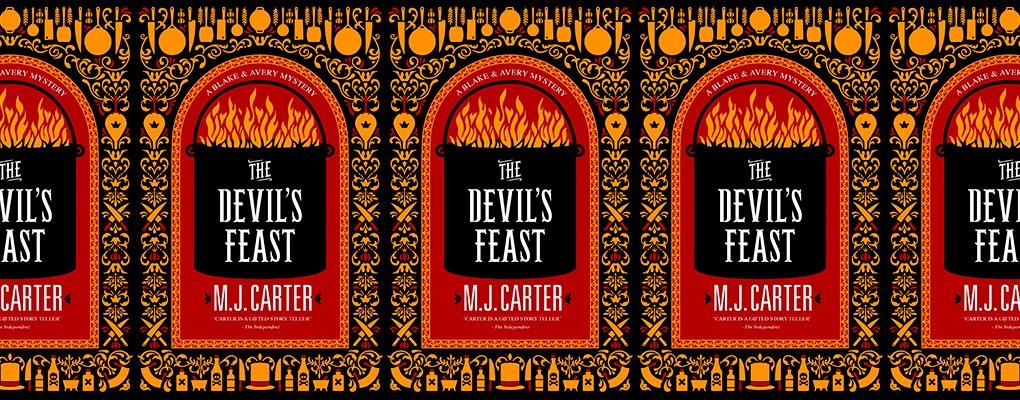Books
The Evolution of Blake & Avery
When I started writing historical thrillers about five years ago (having previously written big non-fiction tomes), I knew I wanted to write a series of books about a detective, and in the course of writing the first, I ended up with two. Along with Jeremiah Blake, my clever, inscrutable, difficult working-class private inquiry agent, I came up with his young sidekick, Captain William Avery: provincial gentleman and soldier, brave, naïve, a bit clueless and full of contemporary prejudices. Avery was the narrator of my first book, The Strangler Vine, set in 1830s India. He actually started out as a structural need — I wanted to keep Blake slightly mysterious so it seemed wrong to tell the story from his perspective. Also given how much I didn’t know about India, my ignorance could be his ignorance, and I could set out the plot to the reader, through what he saw — and often misunderstood.
 To my surprise, I felt I got Avery’s voice almost at once; I completely understood his uncertainty and lack of confidence. Blake, tough, silent, hedged by years of scepticism and cynicism, was much harder to write. In a way I think I was almost scared of him — he was so different from me. I wrote three drafts of the book, and only toward the end of the third, did I feel I’d really got him. But I’d also got, I realised, an unlikely relationship which crossed class lines and which I knew I wanted to explore over future books.
To my surprise, I felt I got Avery’s voice almost at once; I completely understood his uncertainty and lack of confidence. Blake, tough, silent, hedged by years of scepticism and cynicism, was much harder to write. In a way I think I was almost scared of him — he was so different from me. I wrote three drafts of the book, and only toward the end of the third, did I feel I’d really got him. But I’d also got, I realised, an unlikely relationship which crossed class lines and which I knew I wanted to explore over future books.
That is the pleasure — and sometimes the frustration — of writing a series with recurring characters. Almost without realising it, I had devised a whole hinterland and complex back stories for both characters which no one reading The Strangler Vine could have any idea about. This has definitely informed my writing of the subsequent books. In each I want to tell a little more of Blake and Avery’s personal stories, and watch the two of them develop and change — this has become for me what TV-box-set writers call a story arc — over and above the plots of the separate books. Avery, who starts out so young and with all the middle-class prejudices of his time, is growing up fast and Blake sets him questioning all his views. Blake, surprisingly receptive to Avery’s freshness and honesty, is also increasingly angered by Victorian society’s inequalities, iniquities, cruelties. Where this anger will eventually lead is anyone’s guess.
 In the second book, The Printer’s Coffin (first published as The Infidel Stain), the two meet in London after three years apart. Avery has been thinking about Blake all this time and feels a deep sense of connection with and obligation to him, but Blake has withdrawn back into his shell and is determined not to admit that he needs anyone. Forced together by a new case which takes them into the darkest byways of early Victorian London, and into the world of campaigners and revolutionaries, they have to start their relationship all over again. Avery is still a natural conservative and still fascinated by the older man, but he has been traumatised by the experience of war, his marriage is wobbly and these experiences have stripped him of some of his innocence and naivety. We also discover a bit more about Blake’s background — that he grew up in the Rookeries of central London into a criminal family. And we learn what happened to Avery and his wife in Afghanistan.
In the second book, The Printer’s Coffin (first published as The Infidel Stain), the two meet in London after three years apart. Avery has been thinking about Blake all this time and feels a deep sense of connection with and obligation to him, but Blake has withdrawn back into his shell and is determined not to admit that he needs anyone. Forced together by a new case which takes them into the darkest byways of early Victorian London, and into the world of campaigners and revolutionaries, they have to start their relationship all over again. Avery is still a natural conservative and still fascinated by the older man, but he has been traumatised by the experience of war, his marriage is wobbly and these experiences have stripped him of some of his innocence and naivety. We also discover a bit more about Blake’s background — that he grew up in the Rookeries of central London into a criminal family. And we learn what happened to Avery and his wife in Afghanistan.
 London is the setting of The Devil’s Feast, the third book, just out. Avery has a baby son now, and a difficult marriage; Blake’s intransigence has taken him to dark places, and Avery is forced to take a case on all alone — even though he knows he’s not ready. And yet when they do meet, without quite understanding why, they raise each other’s spirits. Avery forces out Blake’s reluctant humanity, and Blake forces Avery to question the ugly contradictions around him.
London is the setting of The Devil’s Feast, the third book, just out. Avery has a baby son now, and a difficult marriage; Blake’s intransigence has taken him to dark places, and Avery is forced to take a case on all alone — even though he knows he’s not ready. And yet when they do meet, without quite understanding why, they raise each other’s spirits. Avery forces out Blake’s reluctant humanity, and Blake forces Avery to question the ugly contradictions around him.
Where next? After three books narrated by Avery, I’m very tempted to write about my protagonists from a slightly different perspective. I’d like to show a bit more of Blake, not necessarily only through Avery’s eyes, and portray Avery himself from another point of view. But I also have to weigh up whether this will change the feeling of the series too much. Will readers follow me if I move to a third person narrative? In terms of settings, well, I am toying with sending them abroad again, perhaps to New York or Italy. As for Blake and Avery themselves, we will certainly discover more about Blake’s past. I’m also thinking that as issues of hunger and poverty darken over the 1840s, and the political movement known as Chartism grows, Blake may become increasingly angry and radicalised. Meanwhile, it seems to me that the disappointments of Avery’s marriage may well eventually drive him to look for affection elsewhere…
How many of the Blake & Avery novels have you read? Let us know in the comments below!




Please note: Moderation is enabled and may delay your comment being posted. There is no need to resubmit your comment. By posting a comment you are agreeing to the website Terms of Use.